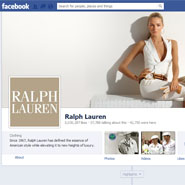- About
- Subscribe Now
- New York,
June 26, 2012

Engagement on Facebook campaigns increases by approximately 50 percent when one related email is sent on the same day and 100 percent with two emails, according to a study by Yesmail Interactive.
The main takeaway from the “Using Digital Market Intelligence to Drive Multi-Channel Success” report is that the days of the week and times of day that consumers most interact with social and media campaigns do not correspond with the times that marketers deploy campaigns. Luxury marketers might consider releasing campaigns during these under-used timeslots, combining email and social media to extend the reach and testing different times of day to see when their consumers are most apt to be social.
“Marketers, large and small, are utilizing all digital channels for marketing,” said Jason Warnock, vice president of market intelligence and measurement at Yesmail Interactive, Toronto. “Our research proves that customers are engaging with these marketers at a healthy rate, which further validates these channels as ‘the new age of marketing.'
“Given all of the skepticism around Facebook ad power, this study gives marketers a new look on how to monetize Facebook marketing efforts,” he said.
This report analyzed the first round of data gathered by the Yesmail Market Intelligence tool. Yesmail Interactive is an Infogroup company.
Missing out
The Yesmail study tracked social media and email campaigns of the top retailers for three months. The results showed that the days and times that consumers interact with social media and email are not the times when marketers are releasing these efforts.
Ralph Lauren was one of the retailers analyzed in the study. Others include Ann Taylor, Banana Republic, Diesel, Guess, H&M, J. Crew, Kenneth Cole and Tommy Hilfiger.
The preppy lifestyle label Ralph Lauren had the most volume-based engagement on Facebook. It ranked fourth according to relative engagement.
While Ralph Lauren seems to be doing well in the social realm, there is room for improvement centered on the day of the week and time of day that the brand might employ its campaigns.
Facebook campaigns get the highest level of engagement on Tuesdays, but that day ranks fourth in the day of the week that social media campaigns are enacted.
There is an upward trend in video interactions on Facebook, but this channel was used in only 6.5 percent of the campaigns examined, according to the study.
The most popular day for a brand to begin a Twitter campaign is Friday, but this day showed the least engagement.
Also, the most consumer interactions on YouTube happen on Mondays, but that is the least-used day for those campaigns to begin.
In terms of time of day, Facebook campaigns see the highest level of interaction 10 p.m.-midnight Eastern Time. But the most-popular time for brands to set off campaigns is 11 a.m.-1 p.m., which is the bottom 30 percent for user engagement.
During the regular work hours 9 a.m.-7 p.m. Eastern Time, 84 percent of Twitter campaigns are put in action, but only 30 percent of these timeslots received the highest engagement.
“We were very surprised that time of day and day of week had such an impact on engagement,” said Matt Gault, vice president of channel strategy at Yesmail Interactive, Chicago. “We were also surprised, that brands did not experiment more with day of week and time of day.
“Many brands sent campaigns out on the same day at the same time, week after week, so we were surprised at the lack of testing," he said.
“However, this may be attributed to the fact that the brands that did not test day of week and time of day were unaware of the fact that their competition were doing things on different days and times and that it was working for them.”
How to be social
There are a few things that may up engagement, according to the report.
For example, video content on Facebook worked much better than static links, but video was used in less than 7 percent of the campaigns studied.
Brands that engaged well had calls to action and incentives in their efforts and made consumers feel in charge of the engagement process.
“It was surprising that only a few of the brands deployed strategies that that consistently and positively engaged with their customers, while other brands repeatedly deployed strategies that did not engage as well as their competition,” Mr. Gault said.
Also, brands that used less frequency saw more engagement.
Particularly on Facebook and Twitter, the brands that engaged most had approximately half the number of campaign deployments in comparison to brands that had the lowest engagement score.
“These findings suggest that marketers who are proud of the brands that they work for have to curb their most natural impulse to talk to their customers about their brand,” Mr. Gault said. “Our study clearly showed that judicious marketing was a much more effective strategy versus over communicating with customers.”
Meanwhile, Yesmail’s research shows that when email campaign data was overlapped with social engagement data, there was an increase in engagement on social channels.
If marketers sent two related emails on the same day that a Facebook campaign began, there was a 100 percent increase in engagement.
On Twitter, engagement increased 25 percent with one email campaign and 40 percent with two.
Email campaigns that are sent out in conjunction with social campaigns should drive engagement via share buttons and calls to action to capitalize on this finding, per Yesmail.
But, only three percent of marketing emails are sent after 6 p.m. Eastern Time, which is also a time slot that many social campaigns begin.
“Our study proved that a strong relationship exists between email campaign deployment and social media campaign engagement,” Mr. Warnock’s said. “Marketers need to develop synergistic strategies between these channels so they work together as a single marketing engine and boost overall performance.”
Final Take
Tricia Carr, editorial assistant on Luxury Daily, New York
Share your thoughts. Click here